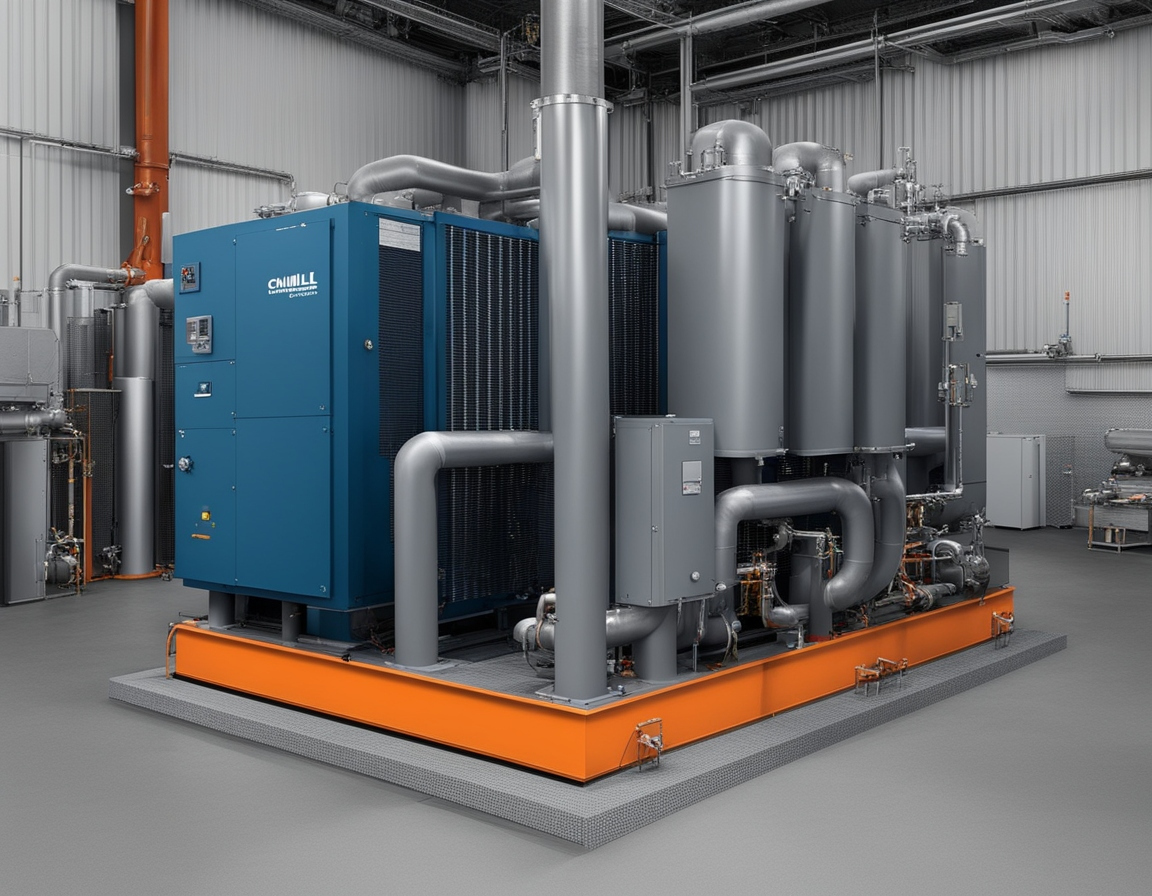
The Ultimate Guide to Vapor Absorption Chillers: How They Work, Why They Matter and Their Future
Introduction:
In the world of sustainable cooling solutions, the Vapor Absorption Chiller stands out as a revolutionary technology. Unlike traditional chillers that rely on electricity, the Vapor Absorption Chiller operates on thermal energy, making it an ideal choice for industries and applications where waste heat or renewable energy is abundant. This blog provides a comprehensive guide to Vapor Absorption Chillers, exploring their working principles, benefits, and future potential. Whether you're an engineer, industry professional, or sustainability advocate, this guide will help you understand why Vapor Absorption Chillers are a game-changer in the cooling industry.
How Does a Vapor Absorption Chiller Work?
The Vapor Absorption Chiller operates on a thermochemical process that uses heat instead of electricity to drive the cooling cycle. At its core, the system relies on a refrigerant-absorbent pair, such as water-lithium bromide or ammonia-water. In a water-lithium bromide system, water acts as the refrigerant, while lithium bromide serves as the absorbent. The process begins in the evaporator, where water absorbs heat from the environment and evaporates at low pressure. The vapor is then absorbed by the lithium bromide solution in the absorber, creating a strong solution. This solution is pumped to the generator, where heat is applied to separate the water from the lithium bromide. The water vapor moves to the condenser, where it is liquefied, and the cycle repeats. The efficiency of a Vapor Absorption Chiller is highly dependent on the temperature of the heat source, with higher temperatures improving the Coefficient of Performance (COP). This unique process makes the Absorption Chiller a highly efficient and sustainable cooling solution.
Why Choose a Vapor Absorption Chiller?
One of the most significant advantages of a Vapor Absorption Chiller is its ability to utilize waste heat or renewable energy. Industries such as steel, cement, and chemical manufacturing generate substantial amounts of waste heat, which can be harnessed to power Vapor Absorption Chillers. This not only reduces electricity consumption but also lowers carbon emissions. Additionally, Vapor Absorption Chillers use natural refrigerants like water or ammonia, which have zero ozone depletion potential (ODP) and low global warming potential (GWP). This makes them an environmentally friendly alternative to traditional chillers that rely on synthetic refrigerants. The VAC is particularly well-suited for large-scale applications, such as district cooling systems and industrial cooling, where its ability to operate on low-grade heat provides a significant advantage.
Cutting-Edge Innovations in Vapor Absorption Chiller Technology:
The field of Vapor Absorption Chillers is witnessing rapid advancements, driven by the need for greater efficiency and sustainability. Hybrid systems that combine Vapor Absorption Chillers with vapor compression units are gaining popularity. These systems allow the Vapor Absorption Chiller to handle the base load using waste heat, while the compression system manages peak loads, ensuring optimal performance under all conditions. Researchers are also exploring the use of ionic liquids as absorbents, which offer higher thermal stability and tunable properties, potentially improving system performance. Furthermore, the integration of Artificial Intelligence (AI) and the Internet of Things (IoT) is transforming Vapor Absorption Chiller operations. AI algorithms can predict cooling demand, optimize energy use, and automate maintenance, while IoT-enabled sensors provide real-time performance monitoring. These innovations are making VACs more efficient, reliable, and cost-effective.
Real-World Applications of Vapor Absorption Chillers:
Vapor Absorption Chillers are being deployed in a variety of applications, from industrial cooling to district cooling systems. In the Middle East, solar-powered Vapor Absorption Chillers are being used to provide air conditioning for commercial buildings, reducing electricity consumption by up to 40%. In India, cement plants are using Vapor Absorption Chillers to recover waste heat from kiln exhaust gases, achieving significant energy savings. Similarly, in Europe, district cooling systems powered by Vapor Absorption Chillers and waste heat from power plants are supplying cooling to thousands of households, reducing carbon emissions by tens of thousands of tons annually. These examples demonstrate the versatility and sustainability of Vapor Absorption Chillers in real-world scenarios. The Absorption Chiller is proving to be a key technology in the transition to sustainable cooling solutions.
Challenges and the Road Ahead:
Despite their numerous benefits, Vapor Absorption Chillers face certain challenges. The high initial cost of these systems can be a barrier to adoption, although lifecycle cost analysis shows that the savings in energy and maintenance costs make them economically viable in the long term. Another limitation is their lower efficiency in low-temperature applications, but ongoing research into advanced absorbents and cascade systems is expected to address this issue. Additionally, the slow market adoption of Vapor Absorption Chillers can be attributed to a lack of awareness and technical expertise. Governments and industry bodies are addressing this through subsidies, training programs, and awareness campaigns, paving the way for broader acceptance of this technology. As these challenges are overcome, the VAC is expected to play an increasingly important role in the future of cooling.
Conclusion:
The Vapor Absorption Chiller is more than just a cooling solution; it is a critical tool in the fight against climate change. By harnessing waste heat and renewable energy, Vapor Absorption Chillers are helping industries reduce their carbon footprint and achieve sustainability goals. As technology continues to evolve, Vapor Absorption Chillers are poised to play an increasingly important role in the future of cooling. Whether you're looking to reduce energy costs, lower carbon emissions, or explore innovative cooling solutions, the Vapor Absorption Chiller is a technology worth considering.
Contact us now to join the revolution!
